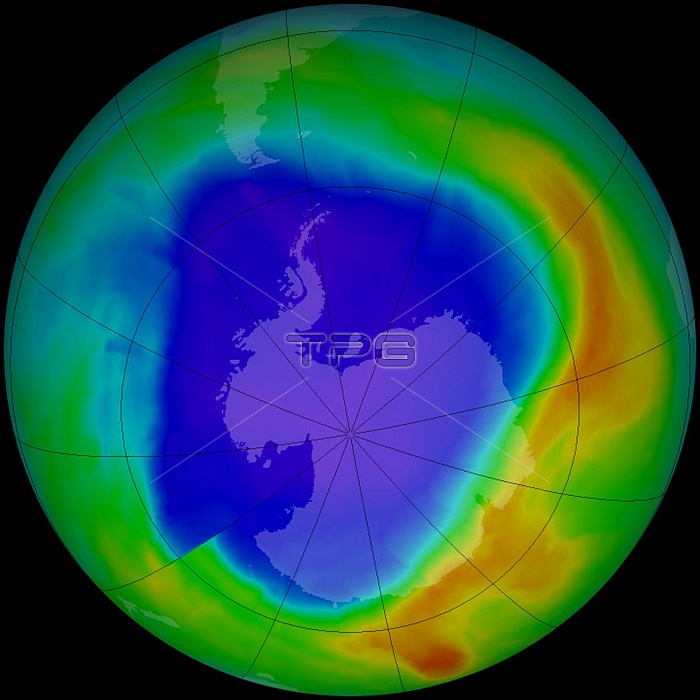
The ozone hole over Antarctica was slightly smaller in 2013 than the average for recent decades, according to data from the Ozone Monitoring Instrument (OMI) on NASA's Aura satellite and the Ozone Monitoring and Profiler Suite (OMPS) on the NASA-NOAA Suomi NPP satellite. The average size of the hole in September/October 2013 was 21.0 million square kilometers (8.1 million square miles). The average size since the mid 1990s is 22.5 million square kilometers (8.7 million square miles). This image shows ozone concentrations over the South Pole on September 16, 2013, as measured by OMI. The ozone hole is a seasonal phenomenon that starts during the Antarctic spring (August and September) as the sun begins rising after winter darkness. Pole-circling winds keep cold air trapped above the continent, and sunlight catalyzes reactions between ice clouds and chlorine compounds that begin eating away at natural ozone in the stratosphere. In most years, the conditions for ozone depletion ease by early December, when the seasonal hole closes.
| px | px | dpi | = | cm | x | cm | = | MB |
Details
Creative#:
TOP22091729
Source:
達志影像
Authorization Type:
RM
Release Information:
須由TPG 完整授權
Model Release:
N/A
Property Release:
No
Right to Privacy:
No
Same folder images:

 Loading
Loading